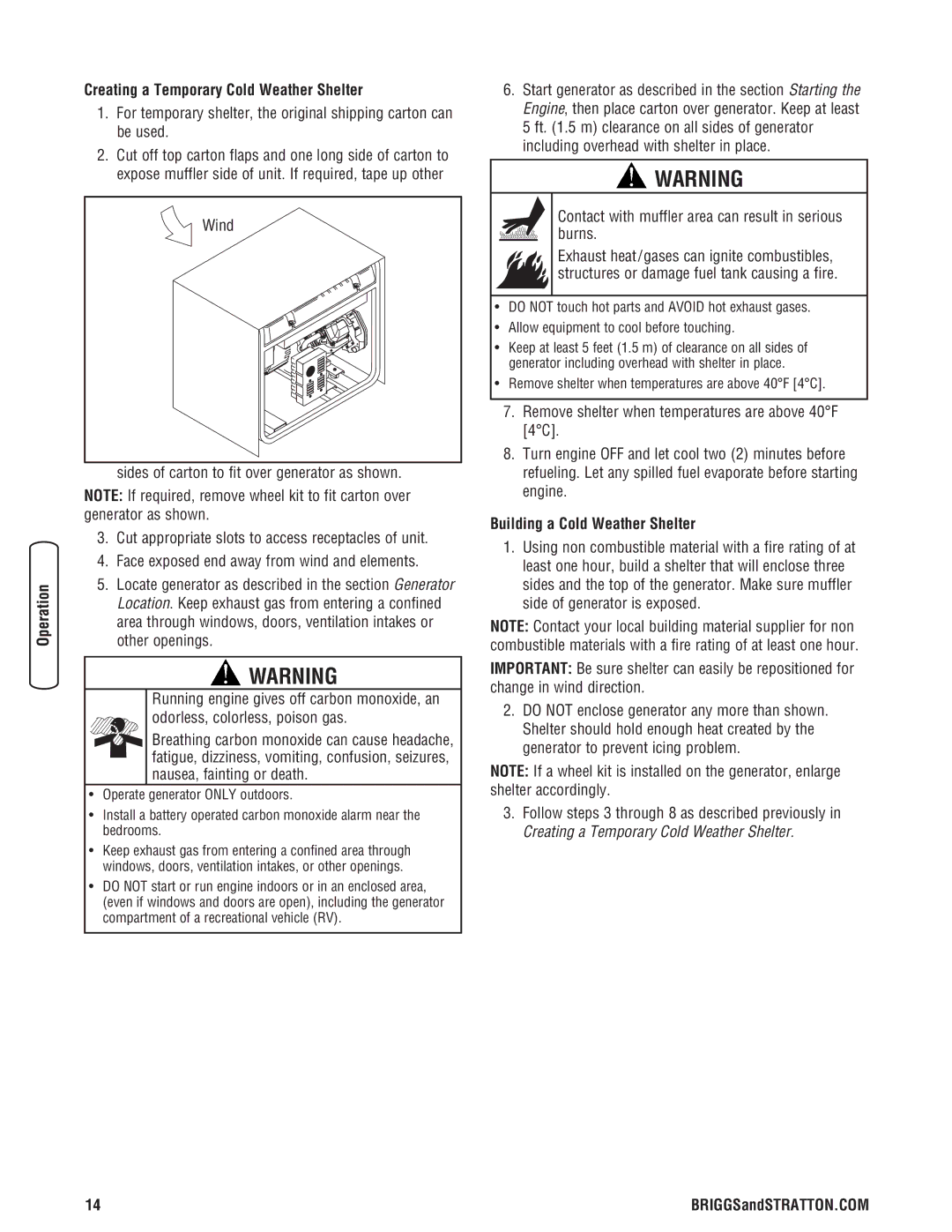206405GS specifications
The Briggs & Stratton 206405GS is a powerful and reliable small engine designed for a wide range of applications, particularly in lawn care equipment, generators, and various outdoor power tools. Known for its innovative engineering and robust performance, this engine has garnered attention from both commercial and residential users alike.One of the standout features of the 206405GS is its advanced overhead valve (OHV) design. This configuration enhances fuel efficiency and improves airflow into the combustion chamber, resulting in better overall performance. The engine's ability to deliver higher torque at lower RPMs makes it ideal for tasks requiring consistent power, such as mowing or tilling.
The Briggs & Stratton 206405GS is equipped with a 206cc displacement, offering a potent power output that can handle challenging yard work. With its easy starting mechanism, users can get their equipment up and running with minimal effort. The inclusion of a recoil starter ensures dependability, even in cold weather conditions.
Another notable characteristic of this engine is its durable construction. It features a heavy-duty, cast iron sleeve for added protection and longevity, allowing it to withstand the rigors of outdoor use. Additionally, the engine’s compact size makes it easy to integrate into various machines, facilitating its widespread adoption in the market.
The 206405GS also benefits from Briggs & Stratton’s exclusive technologies such as ReadyStart®. This system eliminates the need for manual priming, allowing for effortless starting every time. The engine’s built-in oil alert system is another important feature that automatically shuts down the engine in the event of low oil levels, protecting the engine from potential damage.
Maintenance is straightforward, with easy access to the air filter and spark plug, aiding in user convenience and minimizing downtime. The engine's fuel system is optimized for minimal maintenance while still delivering adequate power and efficiency.
In summary, the Briggs & Stratton 206405GS is a well-engineered small engine that combines power, efficiency, and durability. With its advanced features and robust performance, it serves as an ideal solution for various outdoor applications, catering to the needs of homeowners and professionals alike. Its reputation for reliability ensures that it continues to be a popular choice in the competitive market of small engines.

